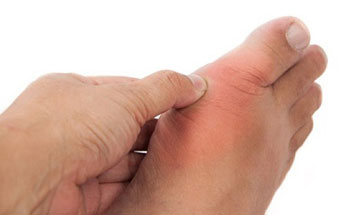
While joints connect most bones with other bones, the sesamoid bones are embedded in tendons or connected to muscles. Sesamoid bones are present in the hands, feet and the knees (the largest sesamoids).
There are two very small sesamoid bones under the big toe in the ball of the foot. They act as a pulley of sorts to help control the big toe. They also aid the foot during the pushing-off phase of walking. Through overuse, or a sudden increase in certain types of activity, these sesamoids can rub against each other. As a result, the tendons in which they are embedded can become inflamed, irritated and painful. Left untreated, this can lead to more serious inflammation or the bones may even fracture.
Who is Susceptible to Getting Sesamoiditis?
Athletes that put repeated stress on the ball of the feet (such as baseball catchers, basketball players, runners, and dancers) are more likely to develop this condition. People with a certain type of pronounced anatomy in that area of the foot, and those who wear frequently wear ill fitting shoes or high heels, have a propensity for developing sesamoiditis as well.
What are Symptoms of Sesamoiditis?
The most common symptom associated with sesamoiditis is pain in the ball of the foot, under the big toe. This pain may develop gradually, and there may also be bruising or swelling in the area. Other symptoms may include
- Difficulty moving, bending or straightening the big toe
- Having a popping sensation in the big toe when walking
- Immediate, acute pain under the big toe if a sesamoid has been fractured
How Your Podiatrist Will Diagnose Sesamoiditis
Your podiatrist will first examine your foot and review any symptoms you have. They will check for tenderness in the area of the sesamoids, and you may also be asked to move the big toe to check for an intensifying of pain. X-rays-or possibly bone scans if the X-rays are inconclusive-may be necessary to make an accurate diagnosis.
How is Sesamoiditis Treated?
The following conservative treatments will typically be effective in the treatment of sesamoiditis:
- Resting the foot and ceasing activity that is causing the pain
- Icing the area
- Taking anti-inflammatory pain medications
- Switching footwear to low-heeled shoes with a soft sole, or clogs
- Using pads or orthotics to offload pressure from the area
- Taping the big toe in a slightly bent position pointing downward
- Getting steroid injections to reduce pain and inflammation
If the sesamoids have fractured, treatment may also include:
- Taping to restrict or limit movement in the big toe
- Wearing a brace or shoes with a stiff sole
If these more conservative measures are not producing desired results, your podiatrist may suggest surgery to remove the sesamoid and suturing the tendons and ligaments back together to enable the toe to push off.
If you believe you may have sesamoiditis, it is important to have your condition checked out as soon as possible by your podiatrist.
